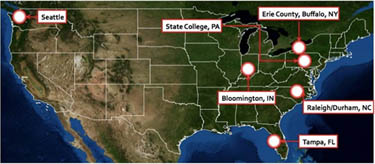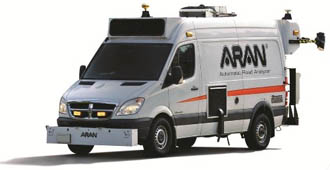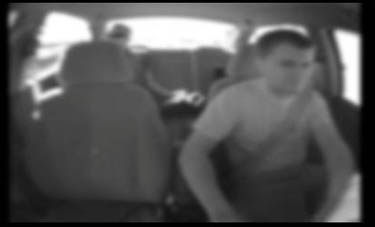InTrans / Aug 15, 2014
Observing drivers in their natural habitat
Go! Magazine
 posted on August 15, 2014
posted on August 15, 2014
Imagine if you had to sift through two petabytes of information and try to make sense of it. That amount of data would fill up more than 456 million DVDs, each holding 4.7-gigabytes of information. If each DVD were 90 minutes long, it would take 78,000 years to watch them all! Transportation researchers have just finished collecting that much data about human driving behavior. The second Strategic Highway Research Program (SHRP 2) was authorized by Congress to address some of the most pressing needs related to the nation’s highway system, including the high toll taken by highway deaths and injuries. As part of the program, the largest naturalistic driving study ever sponsored by the United States government was conducted to identify driver behaviors and roadway conditions that can cause crashes. A total of $70 million was put into collecting the information, which will provide a database for researchers for years to come.

A naturalistic driving study
Run by the Virginia Tech Transportation Institute (VTTI), this project collected information by observing actual drivers in actual driving situations. A total of 3,000 volunteers in six states had their vehicles fitted with a data acquisition system (DAS) that is equipped with cameras and sensors. The cameras faced the driver as well as the road. While volunteers were driving, the cameras recorded their head and eye positions. The DAS also included radar, sensors that detected steering wheel position, speed, ABS, light levels, breaking, turn signal use, gear position, GPS for speed and velocity, and a passive alcohol sensor.

Dr. Omar Smadi, a research scientist at Iowa State University’s Institute for Transportation, was in charge of collecting roadway information on the roads that drivers used, including the number and types of signs, curves (if any), intersection locations and control types, the number of lanes, and the absence/presence of rumble strips and guard rails. Mobile data collection vehicles were sent out with a large variety of sensors and equipment (including cameras, GPS, and road line sensors) to collect this information. The roads collected were generally directed towards rural areas. “We collected information about geometry of the roads to help researcher’s link driver, vehicle, and the roadway environment to research safety issues,” said Smadi. The sensor-laden trucks collected information on 12,500 “centerline miles” (the trucks drove 25,000 miles total, but went both ways). Existing information on an additional 200,000 miles of roads was collected from of the six state departments of transportation included in the study.
Protecting privacy
The intent was to collect information about behavior and conditions, not about any of the specific volunteers. Protecting the privacy of the volunteers was very important. Pictures of car interiors (including the driver) were blurred so they couldn’t be identified. In addition, the information was uploaded to a secure server (and backup server) and heavily encrypted. “The information from the vehicle and driver has a lot of encryption because you don’t want personal information to be leaked,” said Smadi.

Decades-long effort
Researchers will analyze the collected data in various ways. The various analyses will help highway agencies design and build safer roads and help lawmakers pass better highway safety laws. The overall goal is to reduce crash-related injuries and fatalities and develop more efficient designs for transportation infrastructure, like roads and bridges. This study is the largest of its kind ever conducted. The size and cost of it means that there won’t be another one like it for a long time. “The plan is for researchers to use this data for the next 20 to 30 years,” said Smadi.
Related links
http://www.vtti.vt.edu/index.html
By Brandon Hallmark, Go! Staff Writer